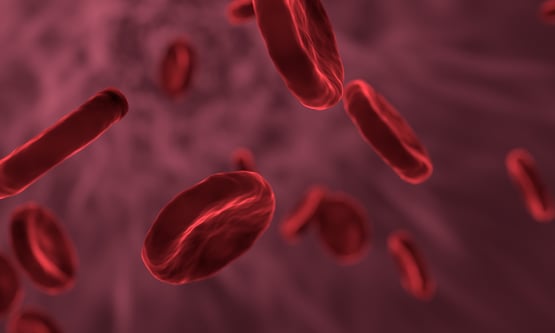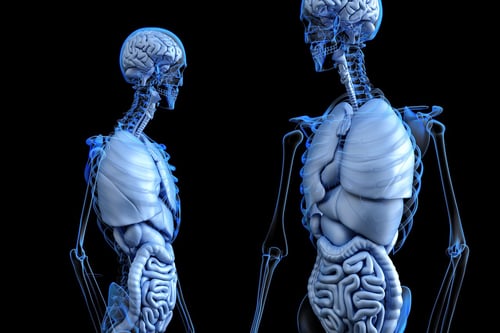
Cells are the building blocks of life. All living things have cells - from small, single-celled organisms like bacteria to large, multicellular organisms like humans.
Cells have specific functions that help keep these varied creatures alive and kicking. In order to make these functions happen, chemical reactions occur within cells. Oftentimes, these chemical reactions are sped up by a special kind of protein called an enzyme.
In this article, we’re going to answer a few questions: what are enzymes, what are enzymes made of, and what types of enzymes exist.
What Are Enzymes?
Enzymes are a special kind of protein that are found in the cells of living organisms. Enzymes are made up of long chains of amino acids that are held together by peptide bonds.
Enzymes help with processes like digestion, blood clotting, and hormone production. They basically either catalyze (cause) or speed up chemical reactions that take place in the bodies of living things. Typically, enzymes are only responsible for one kind of chemical reaction. So, an enzyme that helps with digestion won’t also help with blood clotting.
We need enzymes because they help us initiate chemical reactions. For every chemical reaction, a specific amount of energy needs to be applied to the reactants before the reaction can happen. Enzymes help make reactions happen. It’s kind of like they are the final push over the hill before you can get a ball to roll down it.
What Are Enzymes Made Of?
As I mentioned in the previous section, enzymes are made up of long chains of amino acids. Some enzymes are only made up of one chain of amino acids, while others are made up of many chains of amino acids.
Each enzyme is made up of a unique chain of amino acids (e.g., no two different types of enzymes have the same amino acid structure) and each enzyme also has its own unique shape.

The 6 Types of Enzymes
There are six main types of enzymes that occur in chemistry.
Oxioreductases
These types of enzymes help speed up oxidation and reduction reactions. Basically, they help move oxygen and hydrogen atoms from one place to another.
Transferases
These types of enzymes help groups of atoms transfer from molecule to molecule more quickly.
Hydrolases
These types of enzymes use water to break up single bonds between molecules. Many digestive enzymes are hydrolases and do things like break peptide bonds in proteins.
Lyases
Lyases are similar to hydrolases - they break up or form molecular bonds. Unlike hydrolases, they don’t use water as part of their reaction.
Isomerases
These types of enzymes speed up isomerization reactions. They rearrange the atoms of a reactant to form an isomer (a molecule with the same chemical formula, but different arrange of atoms than the original reactant).
Ligases
Ligases enhance the rate of joining of two molecules by using the energy obtained from the breakdown of ATP.

How Different Types of Enzymes Work in the Body
There are different types of enzymes in the body that can broadly be classified into metabolic, digestive, and food enzymes.
Metabolic enzymes are responsible for reactions related to detoxification and energy production. Many of these enzymes occur in the liver, gallbladder, and pancreas. Metabolic enzymes help us use what we get from food (e.g., protein, fat, and carbohydrates) to make sure that our cells are working, clean, and healthy.
Digestive enzymes help break down the foods we eat and convert them into energy. An example of these types of enzymes is the enzyme amylase, which breaks down starch into simple sugars. The three most important digestive enzymes are protease, amylase, and lipase, which digest protein, carbohydrate, and fat, respectively.
Food enzymes aren’t naturally present in the body - we get them from the food we eat or from supplements. An example of a food enzyme is cellulase - we use cellulase to digest fibers, but it’s not produced in the body. We have to get it from the foods we eat. Food enzymes help digestive enzymes do their job and break down what we consume.
Here are a few more types of enzymes present in our body and what they do.
- Lactase: breaks down lactose, the complex sugar in milk products. Lactose-intolerant people don't have enough of this enzyme.
- Pectinase: breaks down pectin-rich foods such as citrus fruits, apples, carrots, potatoes, beets, and tomatoes.
- Bromelain: breaks down food protein into smaller peptones by hydrolysis; helps the body to fight cancer, improves circulation, and treats inflammation.
- Papain: aids the body in digestion.
- Catalase: breaks down hydrogen peroxide to water and oxygen. Plays an important role in immune function.
Enzyme Definition: Key Takeaways
Enzymes are an important kind of protein that help us do many things, including:
- Break down food into energy
- Detoxify parts of our body
- Form new bonds between molecules
Enzymes are made of chains of proteins called amino acids. Some of them are naturally occurring in the human body and others we need to consume through food.
What's Next?
Writing a research paper for school but not sure what to write about? Our guide to research paper topics has over 100 topics in ten categories so you can be sure to find the perfect topic for you.
Want to know the fastest and easiest ways to convert between Fahrenheit and Celsius? We've got you covered! Check out our guide to the best ways to convert Celsius to Fahrenheit (or vice versa).
Are you studying clouds in your science class? Get help identifying the different types of clouds with our expert guide.
Have friends who also need help with test prep? Share this article!

Hayley Milliman is a former teacher turned writer who blogs about education, history, and technology. When she was a teacher, Hayley's students regularly scored in the 99th percentile thanks to her passion for making topics digestible and accessible. In addition to her work for PrepScholar, Hayley is the author of Museum Hack's Guide to History's Fiercest Females.

































 Holly R.
Holly R.